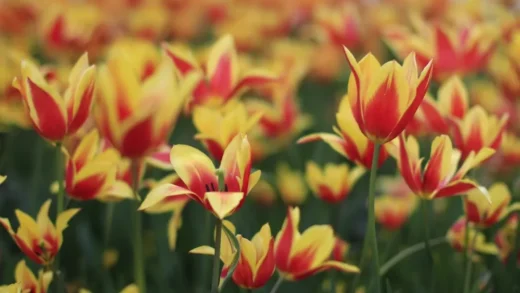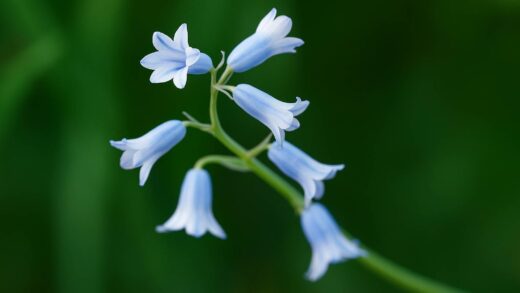The single most critical factor for ensuring a spectacular display of globe amaranth is providing an abundance of direct sunlight. This plant is a true sun-worshipper, and its entire performance, from the sturdiness of its stems to the quantity and vibrancy of its flowers, is directly correlated with the amount of light it receives. Originating from the sun-drenched landscapes of Central America, it is genetically programmed to thrive in intense light and heat. Understanding this fundamental requirement is the first and most important step in selecting a suitable location in the garden and cultivating a healthy, floriferous plant. Any compromise on its light needs will invariably lead to a compromise in its overall quality.
To achieve optimal growth, globe amaranth demands a location that receives a minimum of six to eight hours of direct, unfiltered sunlight each day. More is always better. When planted in a full-sun environment, the plant will develop a strong, compact, and bushy habit, with sturdy stems that can easily support its numerous blooms. The foliage will be a healthy, deep green, and the production of its characteristic globe-shaped flower heads will be prolific, creating a dense carpet of color that lasts from early summer right through to the first frost.
The intensity of the sunlight is just as important as the duration. The plant thrives in the strong, direct light of midday and afternoon, which fuels the process of photosynthesis and provides the energy needed for vigorous growth and flowering. Locations that receive only gentle morning sun or dappled light for most of the day are not suitable and will result in a plant that is a pale imitation of its full potential. Therefore, when planning your garden, reserve your sunniest, most open spots for globe amaranth and other high-light-loving annuals.
This absolute need for sun makes globe amaranth an excellent choice for the hottest, most exposed parts of a garden, where other, more delicate plants might struggle or scorch. It is perfectly suited for south- or west-facing beds, open rock gardens, and container plantings on sunny patios or decks. By honoring its natural inclination for basking in the sun, you provide the foundational element for its success, ensuring a rewarding and low-maintenance display of color and texture.
The impact of full sun exposure
When globe amaranth is provided with its preferred full-sun conditions, the benefits are immediately apparent in every aspect of its growth. The most noticeable effect is on flower production. Abundant sunlight provides the plant with the maximum amount of energy to produce a continuous and profuse display of blooms. Each stem will be topped with a vibrant flower, and the plant will continually generate new flowering stems throughout the season. In contrast, a plant in lower light will produce significantly fewer flowers, and the overall visual impact will be greatly diminished.
More articles on this topic
Sunlight also plays a crucial role in the development of the plant’s structure. In full sun, the internodes—the spaces on the stem between the leaf sets—remain short, leading to a compact, dense, and bushy plant. This sturdy structure is not only aesthetically pleasing but also functional, as it helps the plant to withstand wind and rain without becoming floppy or needing support. The stems will be thick and strong, capable of holding the flower heads upright and creating a tidy, mounded appearance in the garden.
The color of both the foliage and the flowers is also intensified by strong sunlight. The leaves will exhibit a rich, deep green color, indicating efficient chlorophyll production and overall plant health. The papery bracts that make up the flower heads will develop their most saturated and vibrant hues of purple, pink, red, or white when exposed to high light levels. In shadier conditions, the flower colors can appear washed-out or faded, lacking the punch and vibrancy that make this plant so attractive.
Furthermore, full sun exposure helps to keep the plant healthy by discouraging fungal diseases. The sunlight and associated air movement help to quickly dry any moisture from the foliage after rain or morning dew. This dry environment is inhospitable to the fungal spores that cause leaf spots and other moisture-related problems. A plant situated in a shady, damp location with poor air circulation is far more susceptible to these issues, reinforcing the idea that a sunny spot is the healthiest spot for globe amaranth.
Consequences of insufficient light
Planting globe amaranth in a location that receives less than the required six hours of direct sunlight will lead to a series of predictable and undesirable consequences. The most common symptom of insufficient light is a condition known as etiolation, where the plant becomes “leggy.” In an attempt to reach for more light, the stems will grow unusually long and thin, with wide spacing between the leaves. This results in a sparse, spindly, and unattractive plant that lacks the dense, mounded habit it is known for.
More articles on this topic
In addition to the poor structure, a light-deprived globe amaranth will have significantly reduced flowering. The plant simply does not have enough energy to invest in producing a large number of blooms. The flowers that do form will be smaller, less numerous, and their colors will be noticeably paler and less vibrant. In very shady conditions, the plant may produce lush green foliage but fail to bloom at all, which entirely defeats the purpose of growing this particular ornamental annual.
The weak, elongated stems of a leggy plant are not just a cosmetic issue; they are also structurally unsound. These flimsy stems are unable to adequately support the weight of the flowers and leaves, causing the plant to flop over, especially after a heavy rain or in windy conditions. This often necessitates staking or other forms of support, adding an unnecessary maintenance task for a plant that should be self-supporting. This floppiness further detracts from the plant’s appearance, creating a messy, disorganized look in the garden bed.
Plants grown in too much shade are also more susceptible to health problems. The lack of direct sun and reduced air circulation in a shady spot creates a more humid microclimate around the plant. This environment is ideal for the development of fungal diseases like powdery mildew and leaf spots. Furthermore, a plant that is stressed from a lack of light is generally weaker and has a reduced ability to fend off both diseases and potential pest infestations, making it a more vulnerable target in the garden.
Light requirements for seedlings
The critical need for light begins the moment a globe amaranth seed germinates. Seedlings that do not receive adequate light immediately after sprouting will quickly become weak and leggy. This is a common problem when starting seeds indoors on a windowsill. Even a bright window may not provide enough direct, overhead light, causing the seedlings to stretch and bend towards the glass. These elongated, pale seedlings have a much lower survival rate and will struggle to develop into strong, healthy plants.
To prevent this, it is highly recommended to use artificial grow lights when starting seeds indoors. Place the lights just a few inches above the tops of the seedlings and keep them on for 14 to 16 hours per day. This provides intense, direct, and consistent light that encourages the seedlings to grow stout and stocky rather than tall and thin. As the seedlings grow, the height of the lights should be adjusted to maintain the same short distance from the foliage. This simple step is the key to producing high-quality, vigorous transplants.
When direct sowing seeds in the garden, the choice of a full-sun location is paramount for the success of the emerging seedlings. The seeds should be sown after the surrounding trees have fully leafed out, so you can accurately assess the daily sun exposure of the chosen spot. Sowing seeds in an area that is sunny in early spring but becomes shaded later in the season is a common mistake. The young plants need that strong sun from the very beginning to establish a robust root system and a compact growth habit.
Before transplanting indoor-grown seedlings into the garden, they must be gradually acclimated to the intense outdoor sunlight through a process called hardening off. A seedling that has spent its entire life under artificial lights or in a greenhouse can be easily scorched if it is moved directly into full sun. The hardening-off process, which involves increasing the seedlings’ exposure to direct sun over the course of a week or two, allows the leaves to develop a thicker cuticle to protect them from the sun’s powerful rays, ensuring a smooth and successful transition into the garden.




















